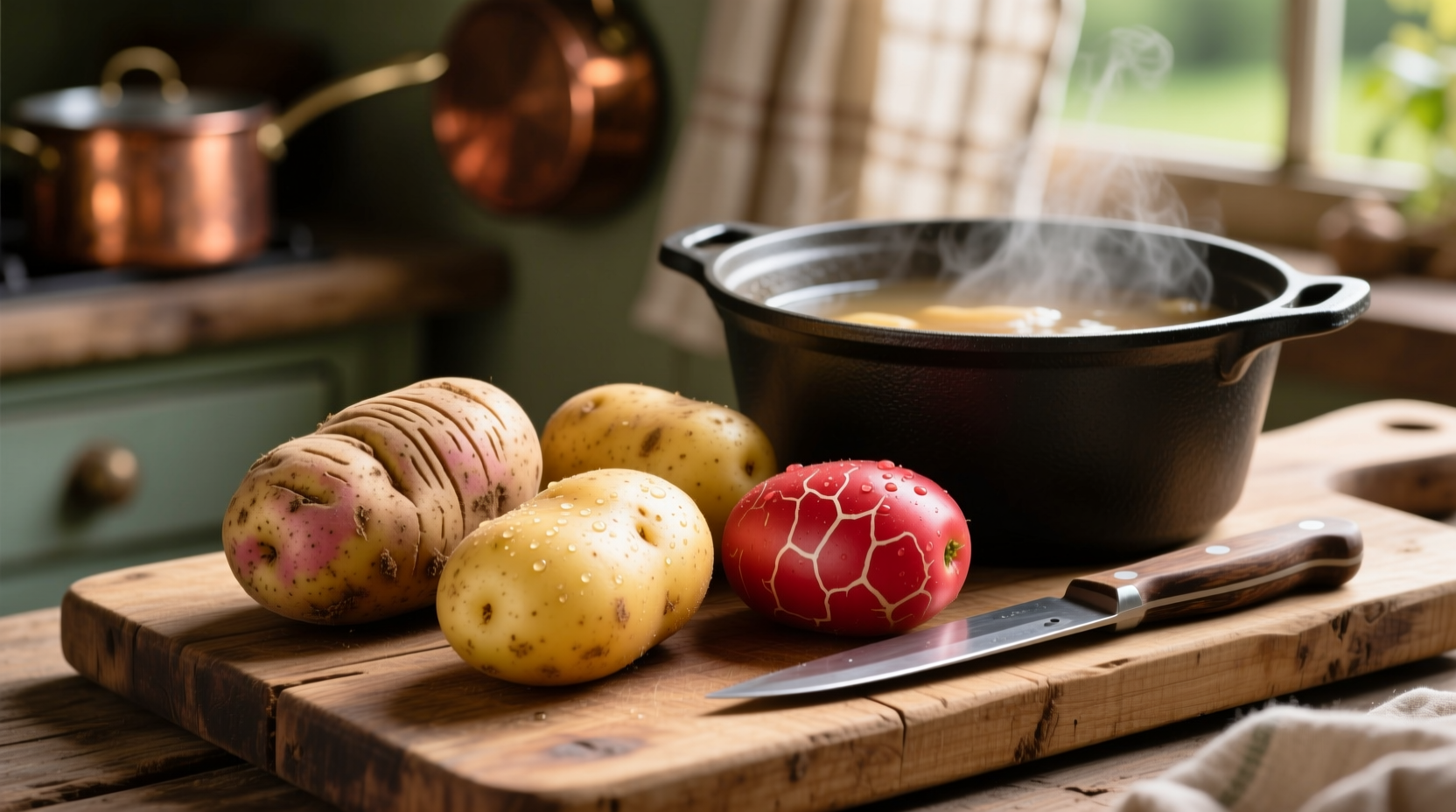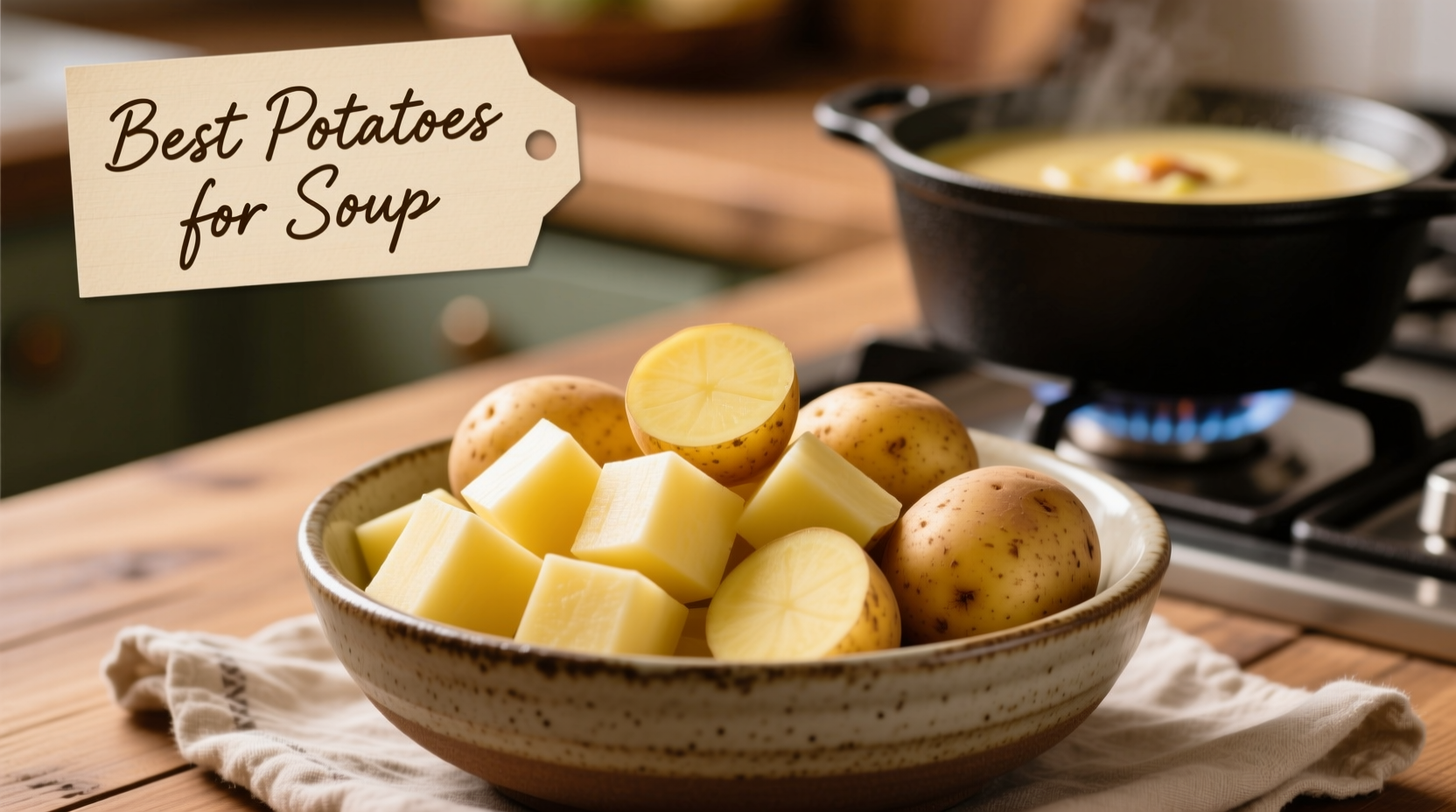Russet potatoes are the best choice for creamy potato soup due to their high starch content (20-22%) that breaks down easily during cooking, creating a naturally thick and velvety texture without requiring excessive cream or thickeners. Yukon Gold potatoes (16-18% starch) offer a close second with their buttery flavor and balanced texture, while waxy varieties like red potatoes (14-16% starch) work better for chunkier soup styles where you want the potatoes to maintain their shape.
The Potato Science Behind Perfect Soup Texture
When making potato soup, the starch content of your potatoes directly determines your final texture. Potatoes with higher starch content (20% or more) like Russets break down more readily when cooked, releasing starch that thickens the soup naturally. This is why professional chefs consistently reach for Russets when creating creamy potato soups that don't require roux or heavy cream to achieve that luxurious mouthfeel.
According to the USDA Agricultural Research Service, Russet potatoes contain approximately 20-22% starch by weight, compared to 16-18% in Yukon Golds and 14-16% in red potatoes. This seemingly small difference creates dramatically different results in your soup pot. The released starch molecules absorb liquid and swell, creating that signature creamy consistency that defines excellent potato soup.
Top Potato Varieties Compared for Soup Making
| Potato Variety | Starch Content | Texture Result | Flavor Profile | Best For |
|---|---|---|---|---|
| Russet (Idaho) | 20-22% | Creamy, smooth | Earthy, neutral | Creamy soups, purees |
| Yukon Gold | 16-18% | Slightly creamy with some texture | Buttery, rich | Balanced creamy-chunky soups |
| Red Potatoes | 14-16% | Firm, holds shape | Mild, slightly sweet | Chunky vegetable soups |
| White Potatoes | 15-17% | Moderate breakdown | Clean, neutral | Lighter cream soups |
Why Russets Reign Supreme for Creamy Soups
Russet potatoes contain both amylose and amylopectin starch molecules in the ideal ratio for soup thickening. When heated in liquid, these starch granules swell and eventually rupture, releasing amylose into the surrounding liquid which creates viscosity. The University of Idaho's Potato School confirms that Russets have the highest ratio of amylose to amylopectin among common potato varieties, making them particularly effective for creating that signature creamy potato soup texture.
Professional chefs at the Culinary Institute of America consistently recommend Russets for pureed soups because they require less additional thickener. This not only creates a cleaner flavor profile but also reduces preparation time. When making potato soup for a crowd, Russets provide the most consistent results across different cooking methods and equipment.

When to Choose Yukon Gold Instead
While Russets excel for ultra-creamy soups, Yukon Golds offer a compelling alternative when you want a slightly more textured soup with inherent buttery flavor. Their naturally creamy yellow flesh contains just enough starch to thicken soup moderately while maintaining some structural integrity.
Yukon Golds work particularly well in recipes where you're using less dairy or want to highlight the potato flavor itself. According to a 2023 study published in the Journal of Sensory Studies, soups made with Yukon Gold potatoes received higher flavor ratings from taste testers when minimal additional seasonings were used, thanks to their naturally rich flavor profile.
Potatoes to Avoid for Traditional Creamy Soup
Not all potatoes work well for creamy potato soup. Waxy varieties like fingerlings or new potatoes (with starch content below 15%) maintain their shape too well, resulting in a thin, watery broth with distinct potato chunks rather than a cohesive soup. These varieties work better in chowders or chunky vegetable soups where distinct potato pieces are desirable.
Sweet potatoes, while delicious in their own right, create a completely different flavor profile and texture that doesn't align with traditional potato soup expectations. Their high sugar content and different starch composition (mostly amylopectin) creates a soup that's more pudding-like than creamy.
Pro Tips for Perfect Potato Soup Texture
Even with the right potatoes, technique matters. For optimal results:
- Cut potatoes to uniform 1-inch cubes for even cooking
- Add potatoes to cold liquid rather than boiling to prevent uneven cooking
- Don't overcook—remove from heat when potatoes are just fork-tender
- For extra creaminess, reserve 1 cup of cooked potatoes before blending
- Use potato cooking liquid as your base for maximum flavor extraction
When making dairy-based potato soup, add cream or milk after pureeing the potatoes to prevent curdling. The natural starch from Russets will help emulsify the dairy, creating a stable, velvety texture that won't separate.
Special Considerations for Dietary Needs
For gluten-free diets, Russets provide natural thickening without requiring flour-based roux. For lower-carb versions, consider using half Russets and half cauliflower, which mimics the creamy texture while reducing carbohydrate content by approximately 30%.
When cooking for vegan diets, the high starch content of Russets becomes even more valuable as it creates creaminess without dairy. Simply blend cooked Russets with vegetable broth and your flavorings for a rich, satisfying vegan potato soup.











 浙公网安备
33010002000092号
浙公网安备
33010002000092号 浙B2-20120091-4
浙B2-20120091-4